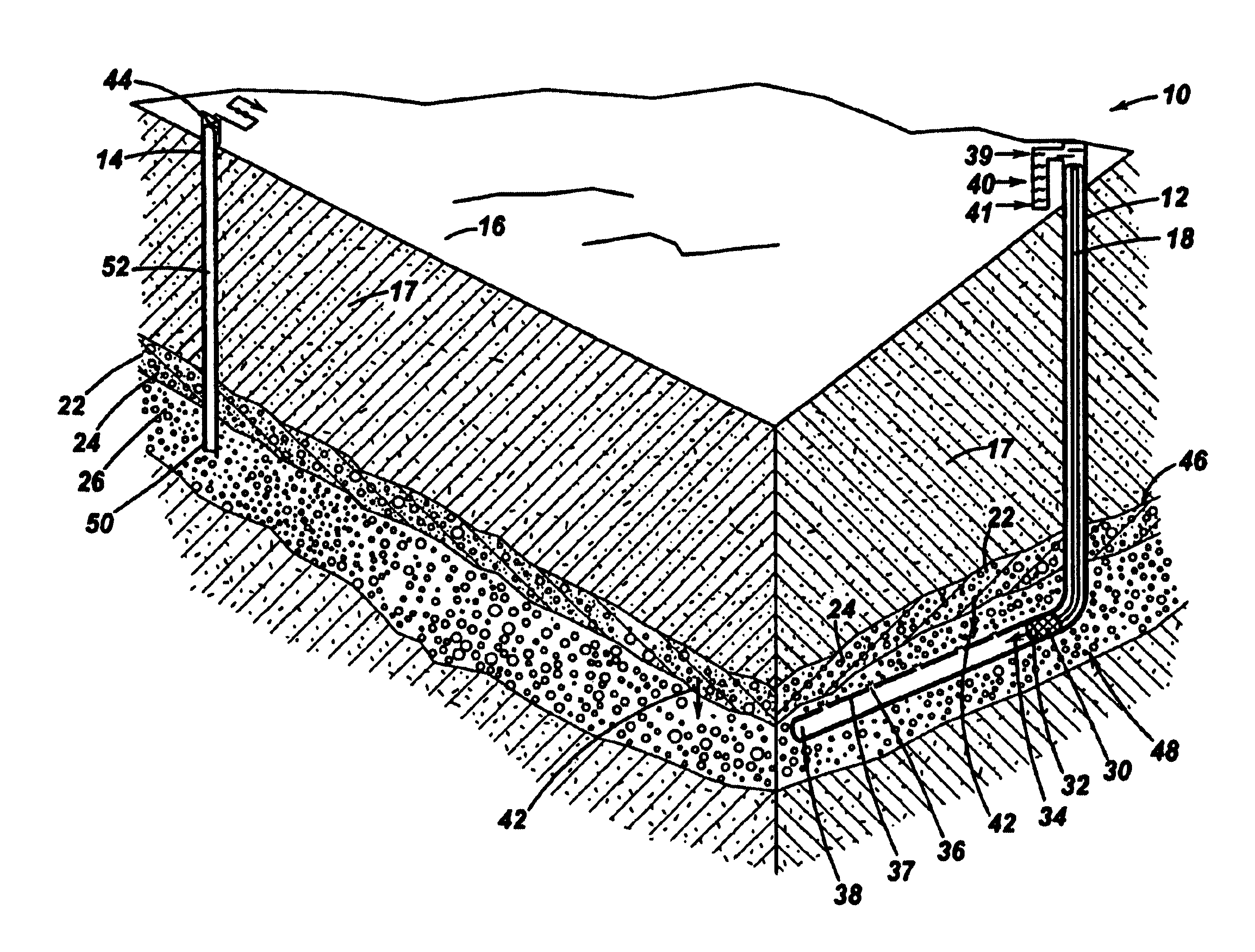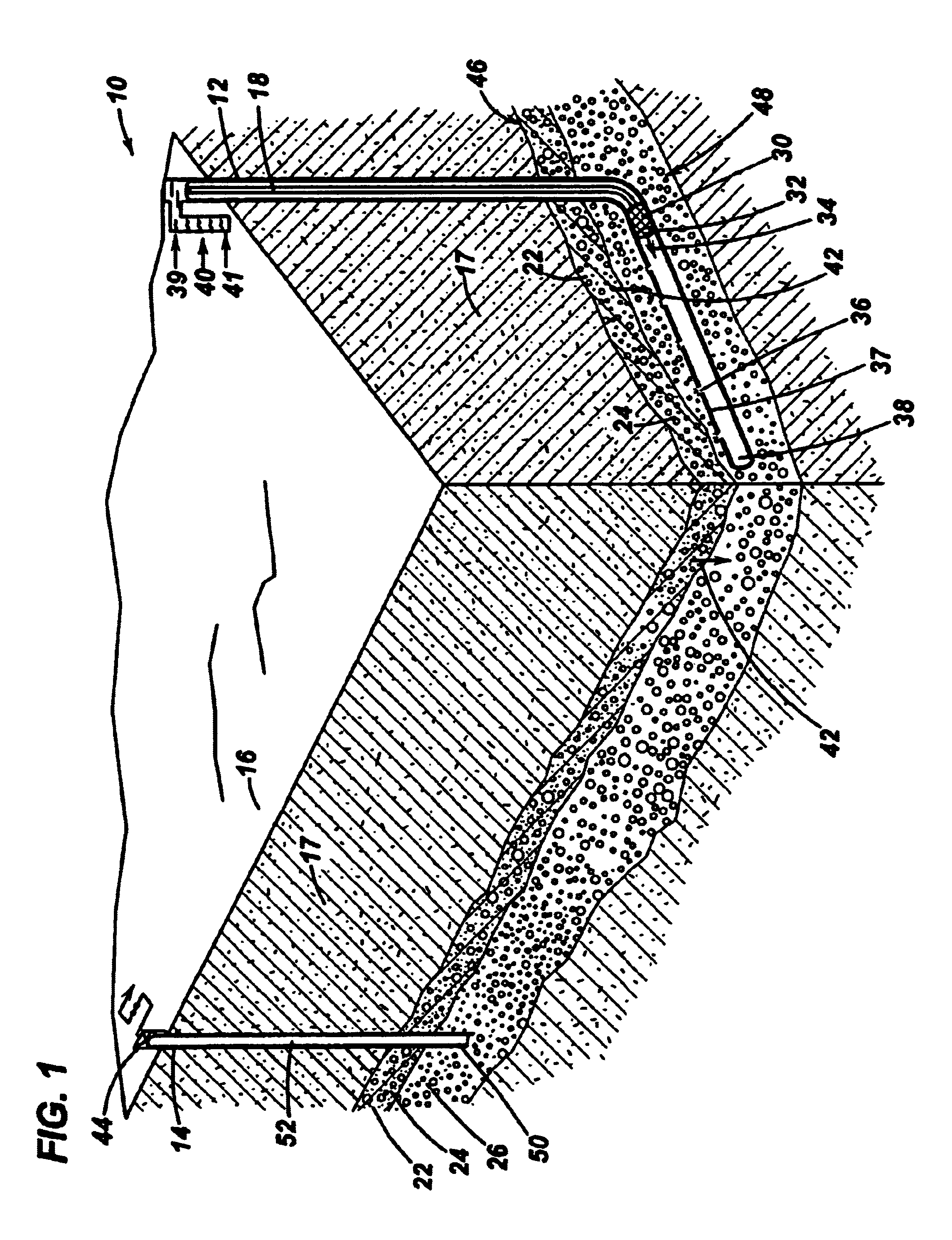Method of natural gas production
a technology of methane hydrate and natural gas, which is applied in the direction of fluid removal, borehole/well accessories, construction, etc., can solve the problems of not being able to recover methane economically from dissociated methane hydrate, high heat loss, and consumption of all the heating value of recovered methane, etc., to achieve energy efficiency and increase energy efficiency of such effects
- Summary
- Abstract
- Description
- Claims
- Application Information
AI Technical Summary
Benefits of technology
Problems solved by technology
Method used
Image
Examples
Embodiment Construction
[0016]As depicted in FIG. 1, a methane production system 10 according to the present invention comprises an injection well 12 and a production well 14. Injection well 12 and production well 14 are representative wellbores well known to one skilled in the oil and gas extraction art. Typically, the wellbores extend substantially downward from a point of access, for example, the surface 16 of a stratum 18. The wellbores also may extend substantially downward from the surface of a body of water, sediment deposit, permafrost, or other geological formation. In FIG. 1, injection well 12 and a production well 14 extend downward through stratum 18, through a hydrate formation bed 22 containing methane hydrates 24, and downward from hydrate formation bed 22 into a gas layer 26. As depicted in FIG. 1, injection well 12 is oriented substantially vertical extending downward through hydrate formation bed 22, and transitions to a substantially horizontal orientation 38 passing beneath and proximat...
PUM
 Login to View More
Login to View More Abstract
Description
Claims
Application Information
 Login to View More
Login to View More - R&D
- Intellectual Property
- Life Sciences
- Materials
- Tech Scout
- Unparalleled Data Quality
- Higher Quality Content
- 60% Fewer Hallucinations
Browse by: Latest US Patents, China's latest patents, Technical Efficacy Thesaurus, Application Domain, Technology Topic, Popular Technical Reports.
© 2025 PatSnap. All rights reserved.Legal|Privacy policy|Modern Slavery Act Transparency Statement|Sitemap|About US| Contact US: help@patsnap.com


